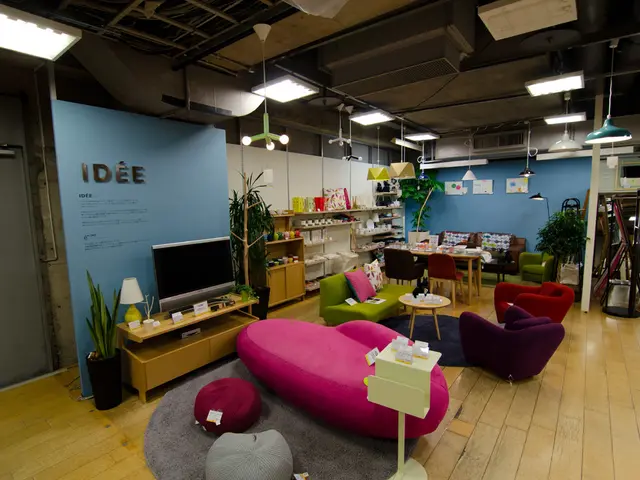Mastering 'Impact' in Your Statements: Discover the Trick to Achieving a Statement Piece Without Disrupting Your Entire Environment
In the world of interior design, creating a space that tells a story is of utmost importance. Alex Alonso, the founder and creative principal of Mr Alex Tate, a design studio known for its storytelling spaces, understands this concept well.
When it comes to emphasising certain design features, Alonso believes in a strategic approach. "The designer's role is to evaluate the space and decide whether to elevate the focal point or work around it with the design," he says.
To effectively use emphasis in interior design, a strong focal point should be established in each room. This could be a bold piece of art, an accent wall, or distinctive furniture. By doing so, a clear visual hierarchy is created, allowing other elements to support rather than compete, preventing visual chaos and lending stability to the space.
Key strategies include anchoring the room with one commanding element, using colour and contrast, repetition and rhythm, balance of weight and alignment, and careful consideration of material and texture. These principles ensure the focal point feels integrated and the room balanced.
Dan Lovatt, an interior designer who graduated with 1st class honours in Interior Design from Teesside University, shares similar views. He advises carefully deciding which features to celebrate and accentuate before adding colour, pattern, or texture to do so.
Lovatt also emphasises the importance of balance in interior design. He believes that good design is about creative solutions that help us to live and feel better. Balance, according to Lovatt, comes from restraint, allowing space to breathe, using neutral elements that support the focal point, and ensuring the eye has moments of rest.
Overusing emphasis, however, can make a room feel chaotic or disjointed. Lovatt warns that if everything is competing for attention, nothing stands out and it can feel cluttered and overwhelming.
In the guest bedroom of one of Alex Alonso's projects, this concept was beautifully executed. The walls and drapery were made very heavy with pattern, causing the eyes to be drawn up to the less busy treatment on the ceiling. This created a visual hierarchy, adding depth to the space while maintaining a well-balanced environment.
In summary, emphasis in interior design is a powerful tool for focusing viewers' attention on a specific design feature or component within a space. By establishing a hierarchy of design and focus, a subtle impact can be created, avoiding overshadowing or dominating the entire design scheme. Whether it's through architectural features, furniture, or art, emphasis in interior design adds drama, interest, character, and identity to a space, making it a captivating and inviting environment.
- In Alex Alonso's design studio, Mr Alex Tate, the focus is on creating storytelling spaces that emphasize certain design features.
- Alonso believes that the designer's role is to evaluate a space and decide whether to elevate the focal point or work around it with the design.
- To effectively use emphasis in interior design, a strong focal point can be established in each room through bold art, accent walls, or distinctive furniture.
- Dan Lovatt, an interior designer, shares similar views, advising careful decision-making about which features to celebrate and accentuate before adding color, pattern, or texture.
- Lovatt also emphasizes the importance of balance in interior design, believing that good design is about creative solutions that help us live and feel better, through restraint, allowing space to breathe, and using neutral elements that support the focal point.
- In the guest bedroom of one of Alonso's projects, visual hierarchy was created by making the walls and drapery heavy with pattern to direct the eyes up to the less busy treatment on the ceiling, adding depth and maintaining balance.







